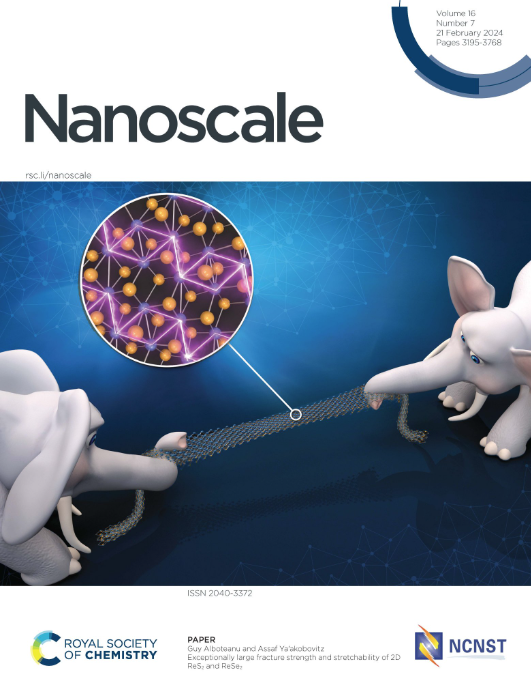Metal-Organic Framework derived α-MnS MWCNT composite as a promising pseudocapacitive material in a flexible quasi-solid state asymmetric supercapacitor device
IF 5.8
3区 材料科学
Q1 CHEMISTRY, MULTIDISCIPLINARY
引用次数: 0
Abstract
The low conductivity of traditionally used pseudocapacitive materials like transition metal oxides has forced researchers to look for alternative materials. Transition metal sulfides are being investigated as viable alternative materials which have shown promising results. In this work, α-MnS MWCNT composite is selected as the active material for supercapacitor application. α-MnS has better conductivity than many transition metal oxides but has an extremely low specific surface area (10.5 m2 g-1), which reduces its specific capacitance. Metal-organic framework (MOF) derived materials are known to possess higher specific surface area and favorable pore size distribution. Herein, α-MnS MWCNT composite is synthesized via two routes: conventional solvothermal technique and MOF route and their performance is compared. It is proved that α-MnS MWCNT composite synthesized through the MOF route shows a favorable porous structure and better performance than the composite synthesized through the conventional route. It shows a specific surface area of 47.6 m2 g-1 and a specific capacitance of 546.3 F g-1 at 1 A g-1 with a mass loading of 1.5 mg cm-2 in 3 M KOH under the 3-electrode configuration. A flexible quasi-solid state asymmetric supercapacitor device is fabricated with MOF derived α-MnS MWCNT as the positive electrode material and the device achieved 1.4 V, showed a specific capacitance of 82.5 F g-1 at 1 A g-1 and a capacitance retention of 90.1% after 5000 cycles at 10 A g-1. The results clearly indicate that transition metal sulfides like MOF–derived α-MnS can be a viable alternative to traditional materials like transition metal oxides. The assembled device has the potential to power flexible, wearable electronics.金属-有机框架衍生的α-MnS MWCNT复合材料在柔性准固态非对称超级电容器器件中具有良好的赝电容性
传统上使用的假电容材料(如过渡金属氧化物)的低导电性迫使研究人员寻找替代材料。人们正在研究过渡金属硫化物作为可行的替代材料,并已显示出有希望的结果。本文选择α-MnS MWCNT复合材料作为超级电容器应用的活性材料。α-MnS具有比许多过渡金属氧化物更好的导电性,但其比表面积极低(10.5 m2 g-1),降低了其比电容。金属有机骨架(MOF)衍生材料具有较高的比表面积和良好的孔径分布。本文采用常规溶剂热法和MOF法合成α-MnS MWCNT复合材料,并对其性能进行了比较。实验证明,通过MOF途径合成的α-MnS MWCNT复合材料具有良好的多孔结构,性能优于常规途径合成的复合材料。在3电极结构下,比表面积为47.6 m2 g-1,比电容为546.3 F -1,质量负载为1.5 mg cm-2,质量负载为3 M KOH。以MOF衍生的α-MnS MWCNT为正极材料制备了柔性准固态非对称超级电容器器件,器件电压为1.4 V,在1 A g-1下比电容为82.5 F -1,在10 A g-1下循环5000次后电容保持率为90.1%。结果清楚地表明,过渡金属硫化物,如mof衍生的α-MnS,可以成为过渡金属氧化物等传统材料的可行替代品。组装后的设备有潜力为灵活的可穿戴电子产品供电。
本文章由计算机程序翻译,如有差异,请以英文原文为准。
求助全文
约1分钟内获得全文
求助全文
来源期刊

Nanoscale
CHEMISTRY, MULTIDISCIPLINARY-NANOSCIENCE & NANOTECHNOLOGY
CiteScore
12.10
自引率
3.00%
发文量
1628
审稿时长
1.6 months
期刊介绍:
Nanoscale is a high-impact international journal, publishing high-quality research across nanoscience and nanotechnology. Nanoscale publishes a full mix of research articles on experimental and theoretical work, including reviews, communications, and full papers.Highly interdisciplinary, this journal appeals to scientists, researchers and professionals interested in nanoscience and nanotechnology, quantum materials and quantum technology, including the areas of physics, chemistry, biology, medicine, materials, energy/environment, information technology, detection science, healthcare and drug discovery, and electronics.
 求助内容:
求助内容: 应助结果提醒方式:
应助结果提醒方式:


